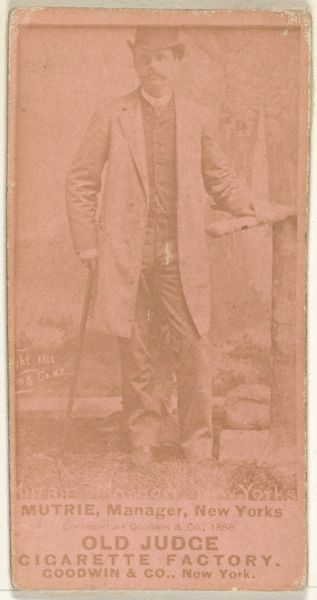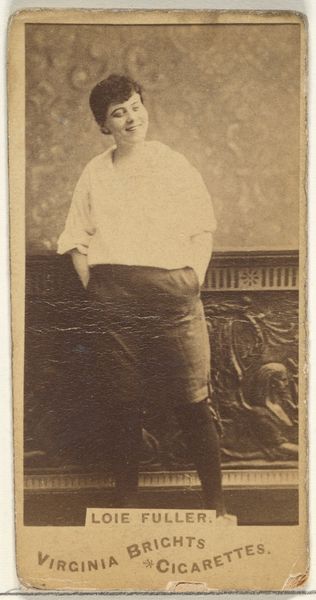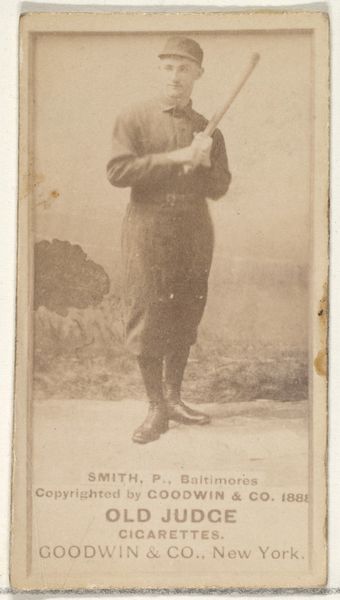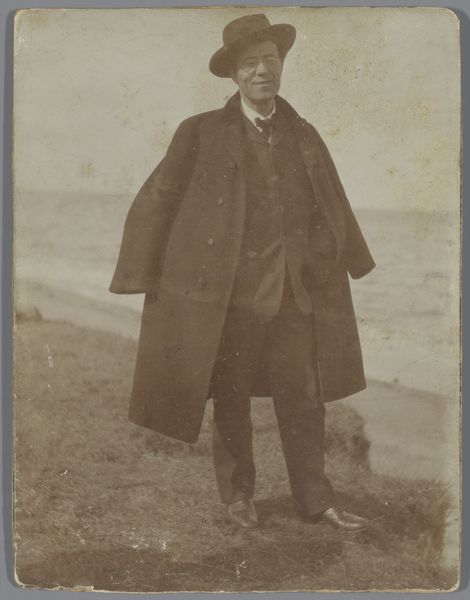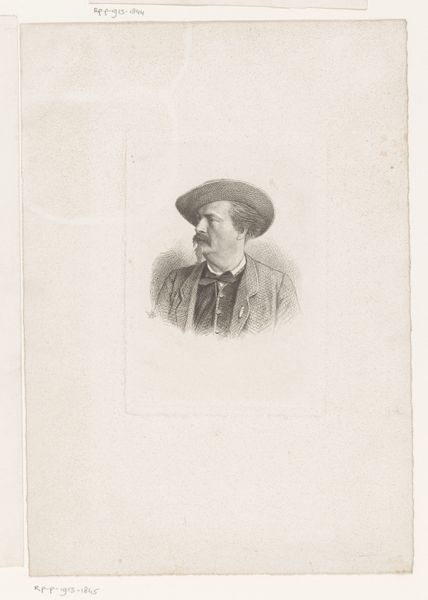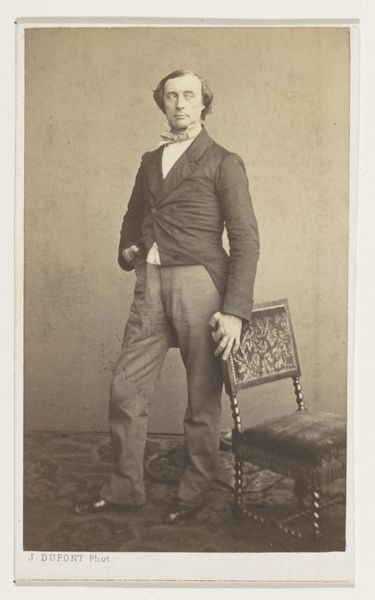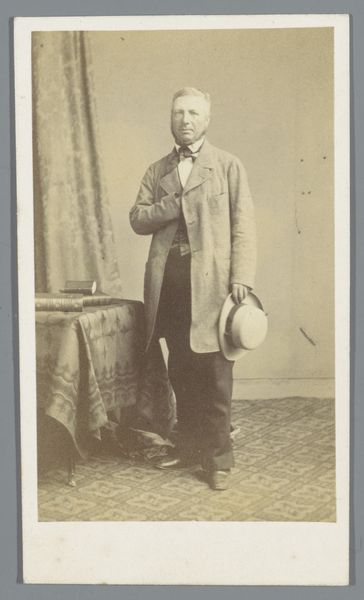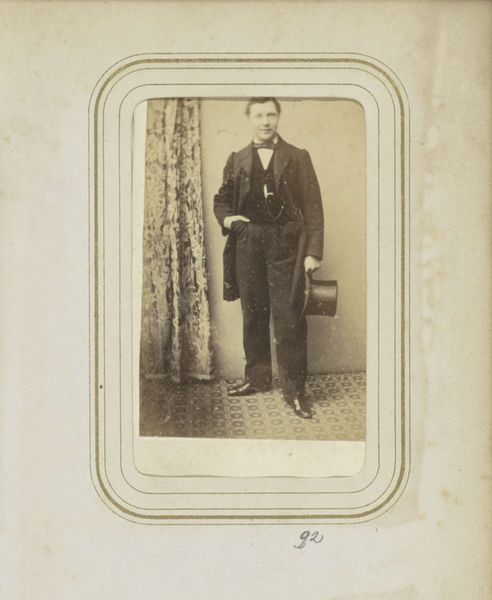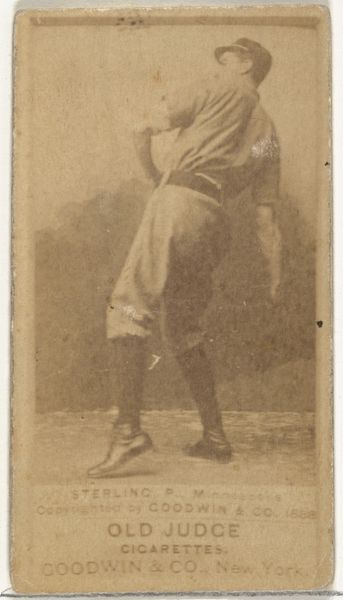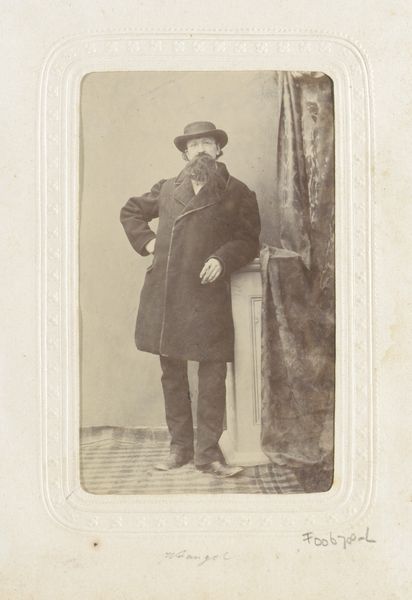
photography, gelatin-silver-print
#
portrait
#
photography
#
gelatin-silver-print
#
realism
Dimensions: height 220 mm, width 144 mm, height 264 mm, width 167 mm
Copyright: Rijks Museum: Open Domain
Curator: Let's discuss this gelatin silver print titled "Portraits of Willem Kloos and Isaac Israels," a work captured by Joseph Jessurun de Mesquita before 1894. What strikes you first? Editor: There’s a palpable air of bohemian self-confidence in the subject's posture and gaze, even despite the photograph's age and sepia tone. His stance, the tilt of the hat, the almost defiant placement of hands on hips—it all conveys a carefully constructed identity. Curator: I'm intrigued by your reading of identity here. Gelatin silver prints were, by the late 19th century, becoming increasingly commercially accessible. Consider how the medium allows for sharper detail and greater reproducibility than earlier photographic processes. How does this shift impact the work? Is this image an affordable way of celebrating this writer, accessible to a broad audience? Or a staged performance for elite literary circles? Editor: Both could be true. Visually, I keep coming back to the hat. Its dark curve above the figure's brow seems almost like a halo, highlighting his intellect, marking him as one of the greats. In this case, literally elevating the man. Curator: That reading makes me consider the role of the studio in image production. I can see the simple textured screen that the artist placed behind him to mimic his persona. He's crafted an author out of off-the-shelf props. I wonder whether it represents an attempt to manufacture authenticity, in that era, or what the subject, and his intended audience, were attempting to reveal about the commodification of art. Editor: The background certainly speaks to constructed space, but I’m wondering about deeper, archetypal roots. Is he posing with intent? In what ways would this appeal to those beyond the literary scene of that time? Curator: It is possible the figure here represents a very knowing comment on celebrity at the turn of the century. And photography like this makes that phenomenon possible. Editor: Perhaps. It all circles back to that compelling gaze, and that hat, anchoring his very confident self. Curator: Well, it’s certainly given me new angles from which to consider both the work itself and the changing nature of artistic representation in that period.
Comments
rijksmuseum about 2 years ago
⋮
Joseph Jessurun de Mesquita was the odd man out in the group of artists and writers that came together in Amsterdam in the late 1880s. He wrote a guide for amateur photographers and was engaged to take photographs by the Leiden National Museum of Antiquities. Above all, however, he re-invented photography. He portrayed his good friends, including Breitner, Israels, Kloos, Gorter, and the composer Diepenbrock very directly and close up.
Join the conversation
Join millions of artists and users on Artera today and experience the ultimate creative platform.
